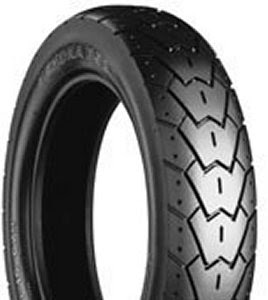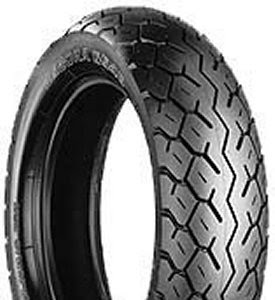A neglected tire can be a deadly one. The simplest and most important thing you can do for your tires' health and your safety is keep them, inflated to the designated pressure.
1. Air It Out: Check tire pressure every chance you get. There's probably no simpler procedure that's more important and more ignored by bikers of every stripe. The air, not the carcass, supports the bike, and underinflation is a tire's number one enemy. (Make sure the tires are cool when you take the reading.) For a better tractrion in wet conditions, increase pressures by about 10 percent. Unsure of what the pressure is supposed to be? Look for a sticker somewhere on the bike. It is also probably on the VIN (serial number) plate hear the steering head with the gross vehicle weight rating (GVWR) and gross axle weight ratings (GAWR) information.
2. Step in Line: Pay close attention to alignment--shaft drive bikes have no adjustment, but if you have a chain or belt, check the position of your tires. Proper alignment ensures better handling and longer wear.
3. Steady, Now: Although it primarily affects handling, improper balance can also shorten a tire's life. Check it after 500 or 1000 miles of use.
4. Top It Off: The valve stem cap should be securely fastened on the stem, because it's an important part of your tire's sealing system. It'll give you extra security at high speeds, when centrifugal force can conspire to open the valve inside the stem.
5. Soap It Up: Most tire manufacturers recommend that the only substance used to keep rubber shiny should be good old soap and water. Many alleged protectants actually promote premature cracking and finish deterioration. Make sure you wipe off any lube, brake fluid or gas promptly, too.
6. Look Before You Crank: Before you saddle up, take a moment to visually inspect your tires. We can't tell you how many times we've pulled out screws or nails before a ride, thus preventing almost certain tire failure. Once you're on the road, it'll be too late.
7. Stay Smooth: This is common sense--avoid potholes and sharp objects on the road that can compromise your tire's integrity. The same goes for curbs.
8. Don't Mix and Match: Never run two tires of differing construction. We can't stress this enough, and this rule applies to bias-plies vs. radials as well as tubeless and tube-type tires--even bias-ply vs. bias-belted tires. The results can be disastrous.
9. Scuff 'Em Up: Optimal grip is obtained only after the tread surface has been ridden on, so go into those first few twisties with a bit of caution. The suggested break-in distance is usually 200 or so miles. After that, check the tire's pressure again!
10. Don't Scrimp: If you replace your tires, make sure you replace the tubes, too. Some manufacturers even recommend that you change both tires at the same time, even if they wear differently.





1 comment:
Regularly rotating your vehicle's tires will help you achieve more uniform wear. Unless your vehicle's owners manual has a specific recommendation, the guideline for tire rotation is approximately every 5,000 miles.
Post a Comment